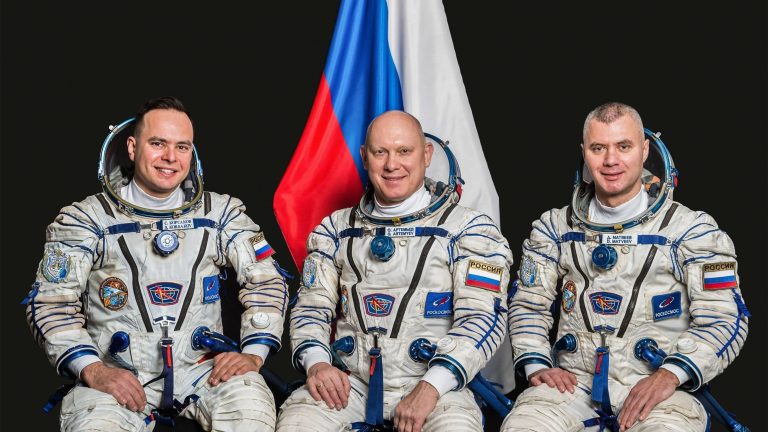From scientist to millionaire? Patents and discoveries that brought huge profits

Groundbreaking discoveries and patents change the world for the better and bring credit to the scientists behind them. But they can also result in significant sums of money going into the accounts of researchers. Huge profits from their work are also made by companies that invest in further work and sell products based on them. We present examples of commercialization of scientific research in Poland.
Looking back, inventions made it possible for Ignacy Łukasiewicz, for example, to make a fortune. Not only did the researcher develop methods of extracting oil, but he founded the first companies and oil mines in the vicinity of Gorlice, Jasło and Krosno. It also turned out that he had a knack for business. In 1854, he opened the world’s first oil mine in Bóbrka, and in 1857, in Klęczany near Nowy Sącz, he opened the world’s first refinery.
Łukasiewicz donated the accumulated funds, among others, to numerous charities. He helped the January insurgents financially, built churches, roads, bridges and schools. He provided medical care and pensions to his employees. He also created relief funds for them.
From scientist to millionaire
Today, the career of a scientist in Poland is mostly associated with hours spent in the laboratory, passion and determination in pursuit of the goal, but not with high earnings. Although we are far from the world leaders when it comes to spectacular, lucrative contracts, we also have examples that discoveries can make good money.
According to the Patent Index prepared by the European Patent Office, in 2022 Poles filed 615 applications. Our country ranked 25th among all reporting countries. Most notifications were made in the area of medical technologies, pharmaceuticals and transport. Nine of the ten largest Polish patent applicants are universities or research institutes. The leader among them is the Jagiellonian University, followed by the AGH University of Science and Technology in Kraków and the Silesian University of Technology. Only one company was included in the top ten – Polpharma.
Corporations profit
The discoveries may have huge commercial potential and Polish scientists are aware of this. Spin-offs are used to turn them into market successes, i.e. companies founded by scientists, associated with a given university or research institute. The source of their financing may be scientific grants, but success often requires an investor who will provide funds for tests or clinical trials.
The discoveries of scientists often earn not only themselves, but also companies and concerns that benefit from their work and use the methods developed by them to produce specific products. In this way, scientific discoveries translate into gigantic profits for pharmaceutical or biomedical companies.
Success of scientists from the University of Warsaw
A few years ago scientists from the University of Warsaw made a breakthrough in the search for cancer vaccines. A team from the Faculty of Physics and the Center of New Technologies of the University of Warsaw has developed a method to increase the durability and productivity of mRNA, i.e. a type of ribonucleic acid whose function is to transfer genetic information about the sequence of individual polypeptides from genes to the translation apparatus.
The findings of Polish scientists caused a stir in the world. The discoveries of researchers from Warsaw quickly attracted the interest of the Louisiana State University and the University of Mainz. At the turn of 2010 and 2011, BioNTech, a biotechnology company owned by the German university, invested in research.
– In the opinion of experts from around the world, this is a discovery that can be compared with the invention of the use of radium and radioactivity in medicine – said Dr. Robert Dwiliński, director of the Technology Transfer Center at the University of Warsaw, in an interview with money.pl at the time, noting that it was “an invention for global scale”. In turn, Dr. Jacek Jemielity, whose team made the discovery, emphasized that their invention “can be bought by anyone today, looking for a new application for it”.
The most spectacular commercialization of research in Poland
Clinical trials, which were possible thanks to BioNTech’s investment, have brought positive results. Pharmaceutical companies were interested in them. In 2015, Sanofi paid $300 million for sublicensing this patent. She wanted to use it for further work on specific drugs. In turn, in 2016, USD 310 million was paid by Roche. At that time, it was the largest and most spectacular commercialization of scientific research in Poland in history.
The seller of the sublicence was BioNTech, but part of this sum also went to Polish scientists. – We cannot reveal the details of this agreement, but I can say that the financial benefits are secured by sublicensing. Let’s say that we receive a few percent of this amount, and this is several million dollars – said Dr. Dwiliński at the time. Half of this amount went to the research institutions that worked on the discovery, and half to the authors of the patent.
A giant deal in biotechnology
A huge success, also financial, was achieved by prof. Piotr Garstecki. As a physicist, he specialized in microfluidic techniques, i.e. technologies that allow to control and observe chemical reactions taking place on a microscale, in single droplets or very small portions of liquid. In 2010, together with Marcin Izydorzak, he founded the biotechnology company Scope Fluidics.
“We decided that this is a very prospective field of science,” Garstecki recalled in an interview for “Forbes”. – We started by creating custom medical diagnostic systems. And in 2012, we started our first project – digital PCR tests in the point-of-care format – he said, explaining that it was about diagnostics at the point of contact with the patient, without transporting samples to the laboratory. PCR|ONE was created, i.e. a device that performs qualitative PCR tests. These tests caused a sensation during the COVID-19 pandemic, allowing for the rapid detection of infection.
In 2022, the company sold the PRC | technology ONE to the California-based company Bio-Rad Laboratories, a world leader in the field of life science and clinical diagnostics, for USD 170 million. One of the largest transactions in the history of Polish biotechnology made investors even more interested in the company. In January this year, the company debuted on the main floor of the Warsaw Stock Exchange.
Contract with a Silicon Valley company
An example of a career from a researcher to a businessman can also be Filip Granek, who earned his doctorate in Freiburg. The scientist specialized in solar cells and nanomaterials. In a garage near Wrocław, he invented a method of applying extremely thin structures. The XTPL company was established, dealing – as its founder explains – “first with the development, and now with the commercialization of technology for very precise printing, which can be used in the production of modern electronics.”
The founder of XTPL acquired investors – two German funds: Actis and Deutsche Balaton. The start-up has finalized a contract to sell its nanoprinting device to a client from Silicon Valley. “It was a breakthrough quarter. Seven years after the establishment of the company, we closed a transaction with a large client from Silicon Valley, working on virtual reality (VR) technology. At the same time, we have entered the next phase of work on a special formulation of electrically conductive ink for the Israeli Nano Dimension, said Filip Granek, founder of XTPL, in an interview with Forbes.
The company has also started the execution of an order for the supply of a printing module for industrial integration for a partner from Taiwan. – The global nature of our company and the versatile printing technology of UPD (Ultra-Precise Deposition) conductive structures is a competitive advantage on a global scale and allows us to look with optimism at current and future cooperation with entities from around the world, the beneficiary of which will be XTPL – noted Granek in the company’s announcement from September last year.
In 2022, XTPL generated PLN 12.8 million in revenues, of which revenues from the sale of products and services exceeded PLN 10 million.






